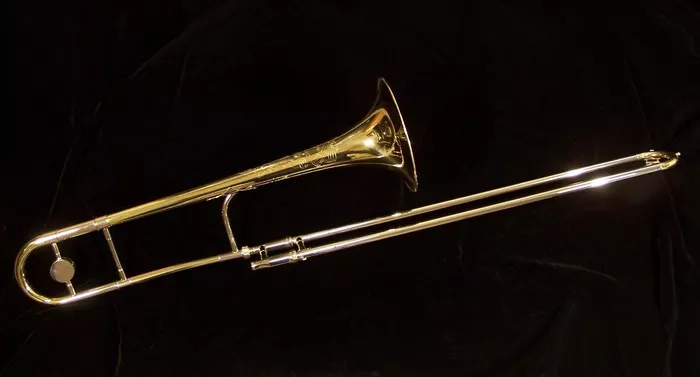Brass instruments are renowned for their bold, resonant sound and distinctive appearance. Among the brass family, the trombone and trumpet stand out as iconic members, each with its own unique characteristics and playing techniques.
The trombone is characterized by its elongated, cylindrical shape and distinctive slide mechanism, which allows players to change the pitch of notes by extending or retracting the slide. In contrast, the trumpet features a compact, conical design with piston valves that are manipulated by the player’s fingers to produce different pitches.
Physical Differences
One of the most noticeable differences between the trombone and trumpet lies in their physical structures. The trombone is distinguished by its long, straight tubing and sliding mechanism, which extends and contracts to alter the length of the instrument and produce different pitches. In contrast, the trumpet features a shorter, more compact design with a cylindrical body and three piston valves that redirect airflow through various lengths of tubing to achieve different pitches.
The trombone’s slide mechanism offers players greater flexibility and control over pitch and intonation, while the trumpet’s valve system allows for rapid articulation and intricate melodic passages.
Playing Style
The playing styles of the trombone and trumpet are fundamentally different due to their distinct mechanisms for producing sound. Trombone players use a sliding motion to change the length of the instrument’s tubing, thereby altering the pitch of the notes produced. This sliding technique requires precision and coordination to achieve accurate intonation and smooth transitions between notes.
In contrast, trumpet players manipulate a series of valves to control the flow of air through the instrument and produce different pitches. By pressing combinations of valves in various configurations, trumpet players can rapidly navigate through scales and execute complex melodic passages with agility and precision.
Sound and Range
The trombone and trumpet each possess unique tonal characteristics and ranges that contribute to their distinct musical voices. The trombone is renowned for its rich, sonorous sound and expansive lower register, which lends depth and gravitas to ensemble performances. With its ability to produce resonant bass tones and soaring melodies, the trombone occupies a prominent role in brass bands, orchestras, and jazz ensembles.
In contrast, the trumpet is prized for its bright, penetrating sound and agile upper register, which allows for dazzling virtuosic flourishes and expressive melodic lines. With its piercing clarity and versatility, the trumpet is a staple of classical orchestras, concert bands, and jazz ensembles, where it often takes on lead and solo roles.
While the trombone typically plays an octave lower than the trumpet, both instruments offer a wide range of notes and dynamic possibilities that make them indispensable members of the brass family.
SEE ALSO: 3 Sizes of Trombone
Roles in Music
The trombone and trumpet fulfill distinct roles in a variety of musical settings, reflecting their unique sound qualities and playing techniques. In orchestras, trombones often provide harmonic support and rhythmic reinforcement in the brass section, adding depth and richness to the ensemble’s sound. Trombones are also featured prominently in brass bands, where they contribute powerful bass lines and expressive melodies in both traditional and contemporary repertoire.
Trumpets, on the other hand, frequently assume lead roles in orchestras and concert bands, where they are tasked with delivering fanfares, solos, and melodic statements that cut through the ensemble’s texture with clarity and precision. In jazz ensembles, trumpets are prized for their improvisational prowess and ability to navigate complex chord changes and syncopated rhythms with flair and virtuosity.
Similarities
Despite their differences, the trombone and trumpet share several fundamental characteristics as members of the brass family. Both instruments rely on the vibration of the player’s lips against a mouthpiece to produce sound, with air serving as the primary medium for sound production. Additionally, both instruments require a combination of embouchure control, breath support, and technique to achieve optimal tone quality, intonation, and articulation.
Choosing an Instrument
When considering whether to play the trombone or trumpet, aspiring musicians should take into account their musical preferences, physical attributes, and playing goals. The trombone offers a unique playing experience characterized by its sliding mechanism and rich, resonant sound, making it an ideal choice for players drawn to its expressive capabilities and versatility across various musical genres.
On the other hand, the trumpet’s compact size, agility, and bright tone make it well-suited for players seeking opportunities for lead and solo playing, as well as ensemble performance in orchestras, bands, and jazz ensembles. Ultimately, the decision between the trombone and trumpet should be guided by personal preference, musical aspirations, and dedication to mastering the instrument’s unique challenges and rewards.
Conclusion
In conclusion, while the trombone and trumpet share some similarities as members of the brass family, they possess distinct physical characteristics, playing styles, and sonic qualities that set them apart. Whether you’re drawn to the trombone’s slide mechanism and rich, sonorous sound or the trumpet’s agile fingerings and bright, penetrating tone, both instruments offer unique opportunities for musical expression and exploration. By understanding the differences between the trombone and trumpet and considering your own musical interests and goals, you can make an informed decision and embark on a rewarding musical journey with confidence and enthusiasm.


